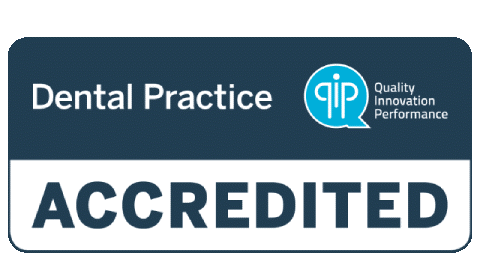Tooth Whitening

Today, safer, more effective and affordable options of tooth whitening are available that can certainly give superb results.
With so many products on the market though, it’s hard to know which to choose. Let’s have a look at what teeth whitening involves – and which may be the best method for you.
What is tooth whitening?
Tooth bleaching, or tooth whitening, is essentially the use of bleaching agents to lighten the colour of your teeth. Our teeth can be stained by a number of different factors, such as lifestyle induced stains, e.g. smoking, drinking coffee, tea or red wine; poor oral hygiene, especially the regular brushing and flossing; tooth decay, thin enamel, excessive fluoride, or even certain medications, such as tetracycline. In particular, tetracycline can stain teeth quite severely, causing a greyish yellowy colour with a mottled effect. Many adults were prescribed the antibiotic medication tetracycline as a child, but because of this nasty side effect, tetracycline is no longer prescribed for children under the age of eight.
Tooth Bleaching Options
Over-the-counter treatments
A variety of products are available, from whitening toothpaste to bleaching kits. Whitening toothpaste can be moderately effective for superficial stains such as coffee or red wine. Do remember though that they contain abrasives and mild bleaches, which can be a little wearing on the enamel. A variety of bleaching kits are also available, from sticky strips that are worn against your teeth, a paint that you apply with a brush, or basic “one size fits all” plastic trays that you apply bleaching gel to, bite into the tray and wear for a certain amount of time.
Custom bleaching trays
Custom tooth bleaching trays can be a terrific option for bleaching your teeth conveniently in your own home. First, your dentist will take any imprint of your teeth so that he/she can make a customised plastic tray for you. They will also give you an appropriate strength of bleach to use in the tray, which you will wear for just one hour, or all night, depending on the type of gel. To see results, most people will have to wear the tray daily for 2 to 4 weeks.
Light activated & laser bleaching
This is a quick way of getting your teeth bleached if you want to get them looking white quickly! Your dentist will protect your lips and gums by a rubber seal or gel, then apply a bleaching agent to your tooth surfaces. Next, either a laser or a high intensity light is shone onto your mouth to accelerate the whitening process. All in all, this process takes just one hour. You may find that only one session is enough – or you may choose to augment this treatment with some home tooth whitening sessions. Your dentist will give you the best recommendation for your teeth.
Internal bleaching
A less known procedure is internal bleaching of the root filled tooth. This is done if the tooth has turned dark after root canal treatment. A small hole will be drilled by a dentist into the back of the tooth, some of the filling from the tooth root canal is removed and some bleaching product is placed into the area. A temporary filling then seals the tooth. One week later, the patient must return to the dentist so that the temporary filling and bleach can be removed. Ideally, the tooth has satisfactory results after one treatment. Sometimes, the dentist may wish to perform the procedure a second time. Alternatively, some dentists may suggest both internal and external bleaching for the best results.
Porcelain veneers
When the above-mentioned methods are not enough, particularly if there are heavy stains or teeth have additional aesthetic issues that need to be addressed, porcelain veneers are recommended. Today, veneers have become so lifelike and attractive. At our clinics in Joondalup, Leeming, Maddington and Leederville, porcelain veneers are a tremendously popular option.
How do I know what is right for me?
To find out the best way to have your teeth whitened, you need to book a short appointment with your dentist. At Dentistry Plus, we offer a variety of cosmetic dentistry options, including veneers and teeth whitening at Maddington, Leeming, Joondalup and Leederville. At your appointment, your dentist will examine your teeth, to diagnose the reason for your tooth discolouration, discuss the best options for you, and propose a plan, including all item numbers for you to take your health insurance company – and all costs. Occasionally, before the bleaching starts, other dental issues need to be addressed, such as decay or gum disease. If this is the case, your dentist will include this in the proposal.
Sometimes there are health factors that deem some people unfit for having their teeth whitened, such as pregnancy, gum disease, the presence of dentures or dental implants, or discolouration caused by medicines as mentioned above.
What are the possible complications of tooth bleaching?
Many people have their teeth successfully bleached, however it’s essential to realise that every dental treatment has some potential for ill effects. Therefore, it is necessary to discuss this with your dentist. Some of the common side-effects of tooth whitening include:
- Sensitivity to cold and hot
- Tooth discomfort or pain
- A short-term sensitivity to air against the teeth
The most common side effect from tooth bleaching is sensitivity to the tooth. For that reason, your dentist may provide you with a tube of tooth mousse to apply to your teeth every evening for a short period of time. Tooth mousse is a remineralising agent, which will help to preserve and protect the enamel of your teeth. For teeth whitening at Dentistry Plus Joondalup, our dentist gives you tooth mousse to wear for a week before the bleaching, to help resist sensitivity.
 The result
The result
Tooth whitening today can give fantastic results. Conservatively speaking, after a tooth whitening treatment, most people have whiter teeth. However, you must be realistic about your expectations. In some instances, your teeth may not be as white as you had hoped for after one session. You must also take into account that your teeth may have been darkened by trauma, medication or disease and, therefore, the dentist can’t always predict exactly how your teeth will respond.
How long will my teeth whitening results last?
You can expect most tooth whitening treatments to last between 1 to 3 years. They can then be performed again in 1 to 3 years.
Maintaining your new white teeth
To receive the best outcome from your tooth whitening, you must remember to take care of your teeth, brushing and flossing regularly, and remember to have your teeth professionally cleaned as often as your dentist has recommended. Occasionally, you may wish to refresh your smile by repeating the professional tooth whitening treatment.
Find out more about tooth whitening in Leeming, Maddington, Joondalup or Leederville
Having your teeth whitened can make an enormous difference to your smile. Why not discuss the options of tooth whitening with our dentist in Joondalup, Leeming, Maddington or Leederville today?
Call Dentistry Plus Joondalup: (08) 6147 5067; Dentistry Plus Leeming: (08) 6147 5087; Dentistry Plus Maddington: (08) 6323 5199 or Dentistry Plus Leederville: (08) 6147 5099


